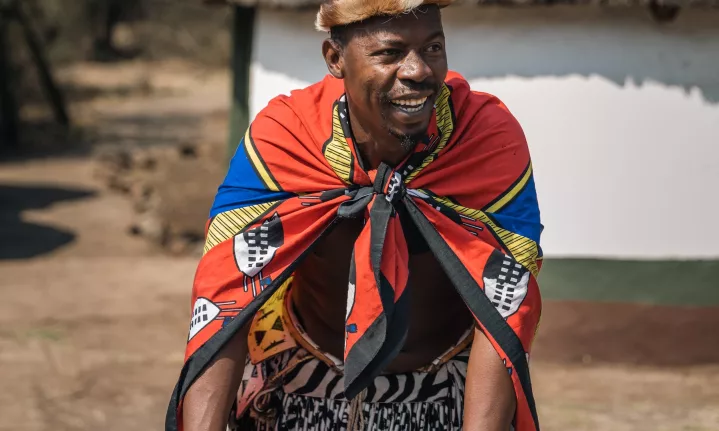South African Culture Today Fundamentals Explained
South African Culture Today Fundamentals Explained
Blog Article
Indicators on South African Culture Today You Should Know
Table of ContentsUnknown Facts About South African Culture TodayNot known Incorrect Statements About South African Culture Today Some Of South African Culture Today4 Easy Facts About South African Culture Today ShownSouth African Culture Today - An OverviewMore About South African Culture Today

The and sheep in addition to of people with shields and spears, in their paints. Unfortunately, hunter-gatherers can not live permanently alongside a resolved area and hence problems developed. When the San dealt with against the BaNtu, they were at a massive drawback not just in numbers however additionally in lack of weapons.
The Europeans owned equines and weapons. In this period, the variety of San was considerably lowered. South African culture today. They dealt with to the fatality and preferred death to capture where they.Colonialism damaged the San migratory means of life, they were no much longer allowed to stroll openly and prize hunters ruined the large herds of video game that created their primary supply of food

Particular individuals might presume management in certain rounds in which they stand out, such as hunting or healing rituals, however they can not achieve settings of general impact or power. White colonists located this very complicated when they attempted to. Management amongst the San is maintained for those that have lived within that team for a long period of time, who have accomplished a reputable age, and excellent character.
Land is usually possessed by a team, and civil liberties to land are typically inherited bilaterally. Kinship bonds offer the. Subscription in a group is identified by residency. As long as an individual survives on the land of his team he maintains his membership. It is feasible to quest ashore not possessed by the group, however permission must be gotten from the proprietors.
4 Simple Techniques For South African Culture Today
Although they do a reasonable quantity of trapping, the best method of searching is with weapon. The San arrowhead does not eliminate the animal straight away. It is the fatal poisonous substance, which ultimately triggers the fatality. When it comes to little antelope such as Duiker or Steenbok, a couple of hours might elapse before death.
The meat is boiled or roasted on a fire. and every component of the animal is used. The hides are tanned for coverings and the bones are cracked for the marrow. Water is hard to find by, as the San are constantly on the relocation. Generally throughout the dry period, these migrants accumulate their moisture by scratching and squeezing origins.
They also carry water in an ostrich eggshell. A caterpillar, reddish yellow in colour and concerning three-quarters of an inch long, called ka or ngwa is also made use of. till it resembles red currant jelly. It is after that permitted to cool down and prepared to be smeared on the arrowheads. The poisonous substance is very toxic and is greatly feared by the San themselves; the arrowhead points are as a result reversed so that the toxin is safely had within the reed collar.
The poisonous substance is neuro harmful and does not pollute the entire animal. The spot where the arrowhead strikes is removed and discarded, yet the remainder of the meat is fit to eat. The impact of the toxin is not instant, and the hunters frequently have to. The San also dug risks near the bigger rivers where the game involved consume.
The Buzz on South African Culture Today
These pitfalls were intelligently covered with branches, which her response caused the animals walking over the pit and dropping onto the stake. When capturing tiny animals such as hares, guinea fowls, Steenbok or Duiker, or fiber from plants were made use of. These had a running noose that suffocated the animal when it entered the entrapment to gather the food that had been placed inside it.
Aardvark openings are utilized by small buck as a resting place to leave the noontime sun. The hunter waited patiently behind the opening till the pet left. When this took place, it was be firmly pinned and appealed the head with a Kerrie (club). The and recognize the routines of their victim.
Indicators on South African Culture Today You Should Know
If the ground is bare and open, he will creep on his tummy, sometimes holding a little shrub in front of him. Seekers lug a skin bag slung around one shoulder, including personal belongings, poison, medication, flywhisks and additional arrowheads. They might also carry a club to throw at and stun small game, a lengthy probing stay with remove hares from their burrows or a stick to remove Aardvark or Warthog.
According to San custom, they rated to share the meal and would, in the future, need to respond similarly. However, plant foods, gathered by the womenfolk, are not shared but consumed by the woman's prompt family members. The San use over 100 edible varieties of plant.
Youngsters remain at home to be viewed over by those continuing to be in camp, but nursing kids are brought on these celebration trips, including to the load the women should carry. Until recently, most amateur and expert anthropologists took a look at a rock paint of the San and believed that they might decipher it with no issues.
When witch doctor (medicine males) repainted an Eland, they did not simply pay regard to a sacred pet; they additionally used its essence (N!um). San rock paints are discovered in rocky locations of the KwaZulu-Natal, Eastern Cape and the Western Cape districts.
Little Known Questions About South African Culture Today.
Blue and green were never made use of. Red was stemmed from haematite (red ochre), and yellow from limonite (yellow ochre). Manganese oxide and charcoal were made use of for black; white, which does not protect well, was most likely obtained from bird droppings or kaolin. The blood of an Eland, a pet of fantastic religious and symbolic significance, was often combined right into the colour pigments.
Human numbers are stylized and portrayed as having long strides and the pets are either trotting or leaping, or, much more subtly, flipping a tail over at this website or twisting a neck. A lot of the paints have an underlying spiritual theme and are thought to have actually been depictions of spiritual ceremonies and routines. The San idea system usually observes the preeminence of one effective god, while at the exact same time identifying the visibility of lesser gods together with their spouses and children.
Among some San, it is believed that working the dirt is contrary to the globe order developed by the god. One of the most vital spiritual being to the southern San was/ Kaggen, the trickster-deity. He created many points, and shows up in various misconceptions where he can be crazy or smart, tiresome or valuable.

/ Kaggen is not constantly a hoping mantis, as the mantis is only one of his symptoms. He can also transform right into an Eland, a hare, a snake or a vulture - he can assume numerous types. When he is not in one of his animal forms,/ Kaggen lives his life as a regular San.
South African Culture Today Fundamentals Explained
when he eliminates his first large view website antelope, preferably an Eland. Once caught, the Eland is skinned and the fat from the pet's throat and collarbone is made right into a broth. In the girls' puberty routines, a girl is separated in her hut at her initial menstrual cycle. The females of the tribe perform the Eland Bull Dancing where they mimic the breeding behavior of the Eland cows.
Report this page